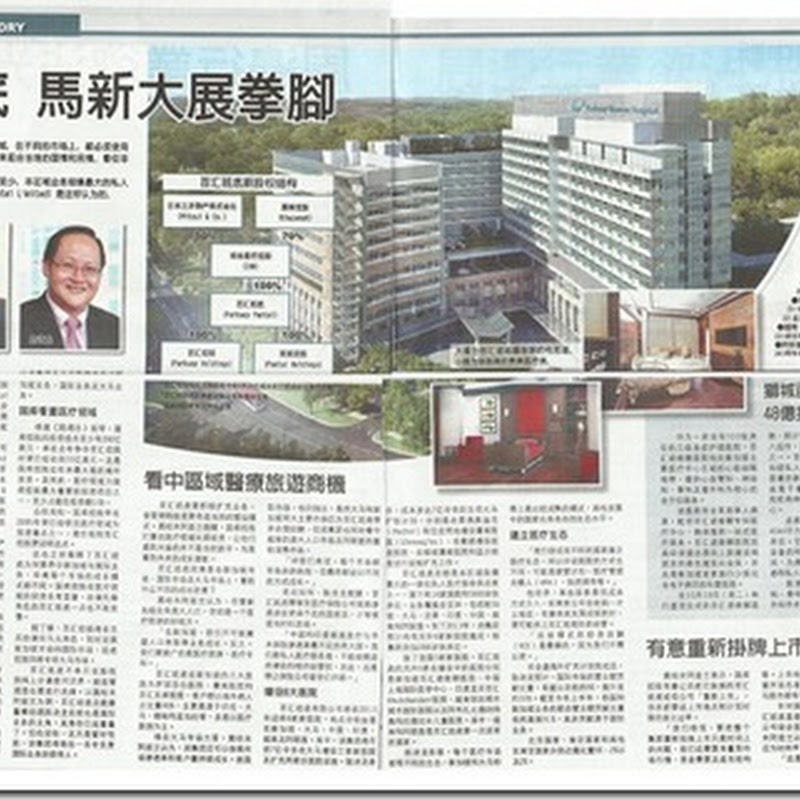Mercury Securities Sdn Bhd Research:-
Xingquan’s 3Q/FY11 (quarter ended 31st March 2011) results were generally within our earlier expectations.
“Results in-line”
The group’s 3Q/FY11 revenue of RM178.5 million was 8.6% higher y-o-y while its profit before tax (PBT) of RM36.5 million was lower by 2.3% y-o-y. The increase in revenue was contributed by the increase in sales volume of shoe soles and also the increase in ASPs (average selling prices) of its shoes and apparels. Group 9M/FY11 revenue was up by 17.0% y-o-y to RM527.7 million.
“Higher ASPs”
The group’s 3Q/FY11 net profit after tax (NPAT) was lower by 8.0% y-o-y. The increase in selling and distribution expenses was mainly due to expenses related to outlet-renovation subsidies, outlet-display shelves and expansion of sales network. The higher effective tax rate was attributed to the provision for deferred tax liabilities.
Comparing q-o-q versus the preceding 2Q/FY11, the group’s 3Q/FY11 revenue was lower by 6.4%. This decrease in revenue was due to the slight decrease in sales due to the lower ASPs typically generated for Spring/Summer shoes, apparels and accessories. ASPs for Autumn/Winter products are typically higher. The group’s 3Q/FY11 PBT was higher by 10.6% q-o-q, mainly due to the lower selling and distribution costs during the quarter.
OUTLOOK/CORP. UPDATES
Currently, Xingquan’s prospects for the coming year appear promising, due to the strong demand for consumer goods in China’s domestic market. The country’s leadership had targeted a future economic growth rate of at least 7% per annum.
“Strong demand from China middle class”
Xingquan primarily targets the middle class segment in China, focusing on an increasingly urban and discerning population within the 10-40 years age-group.
China’s middle class had increased by 22.1% to 80 million people in January 2007, up from just 65.5 million people in January 2005 and this segment is expected to increase to a huge number of 700 million people by the year 2020. With purchasing power increasing among Chinese consumers, especially among the emerging middle class, private consumption is seen as a major driver for the growth of the Chinese economy in the future.
The rising affluence in China would also lead to continued growth in consumer expenditure on leisure activities, sporting activities, entertainment and sports shoes/apparels. The PRC government also has various efforts in promoting healthy lifestyle and organisation of major sporting events. All this augurs well for the demand of sports shoes, apparels, accessories and equipments.
“Increasing production capacity”
Xingquan had started production at its new plant during the month of February 2011. Currently, there are 6 productions lines at the new plant, of which 5 are already in full operation. The group plans to add 2 more lines during the next 12 months, bring its production capacity to around 8 million pairs of shoes a year. At the group’s existing plant, new production lines are being added for shoe soles and this may increase its production capacity by around 20%, to around 22 million pairs of shoe soles per year.
Xingquan’s products are currently available across 26 provinces in China. The group targets to have approximately 2300 stores by June 2011 and is on track to achieve this target. As at 31st December 2010, the group has 2100 stores. The group plans to expand into 5 new provinces and autonomous regions, namely Shaanxi, Gansu, Qing Hai, Ningxia and Guizhou. The group’s stores are typically located in popular shopping areas within first, second and third tier cities in China.
“Promising sales for Gertop brand”
The group’s efforts in growing its brand Gertop as an up and coming outdoor casual wear brand in China has been encouraging. Orders for Gertop products during the Spring/Summer Show 2011 exceeded earlier sales at trade shows. The rapidly growing Gertop brand is now present at Xingquan’s more than 2100 points-of-sales across China.
Xingquan’s management has focused its business operations to cater for the outdoor shoes and apparels market segment. Outdoor wear are usually made of tougher materials and meant for harsher weather and physical activities (e.g. mountain climbing, hiking and hunting). The outdoor shoe and apparel segment is currently not as competitive as the sports shoe and apparel segment. Nevertheless, Xingquan faces competition from outdoor brands such as The North Face, Columbia, Timberland, Toread, Ozark, Kolumb, Jeep and Camel.
VALUATION/CONCLUSION
We are comfortable with Xingquan’s expansion plans, business model and strategy, going forward. China’s economy is still growing at a strong pace while its expanding middle class would contribute to the strong demand for consumer products, such as shoes and apparels.
Xingquan had paid out a tax-exempt final dividend of RM0.025 per share for its FY10 during December 2010. Earlier on, the group had also paid out a similar amount of interim dividend for its FY10. The group’s management has targeted a dividend payout of at least 10-20% of its net profits after tax.
With an adjusted beta of 0.65 to the KLCI, Xingquan (-20.3%) has underperformed the KLCI (+1.65%) this year. In recent months, Xingquan’s stock price had experienced some weakness. In recent months, equity markets have been impacted by the political unrest in the Middle East/North Africa, public debt issue in Europe and also the Tohoku tsunami/earthquake in Japan.
“Maintain Buy Call”
Based on our forecast of Xingquan’s FY11 EPS and an estimated P/E of 5 times (within its historical range), we set a FY11-end Target Price (TP) of
RM1.90. This TP represents a substantial 61.4% upside from its current market price. Our TP for Xingquan reflects a P/BV of 1.3 times over its FY11E BV/share. Meanwhile, the regional Footwear sector’s average P/E and P/BV is 19.2 times and 1.9 times, respectively.
“Seriously Undemanding valuations”
We find that the group’s FY11F P/E and P/BV valuations are not pricey at all, while it has reasonably solid dividend yields and ROEs. The group is also in a net cash position. We nevertheless note that its share price has not appreciated in tandem with its earnings performance.













































